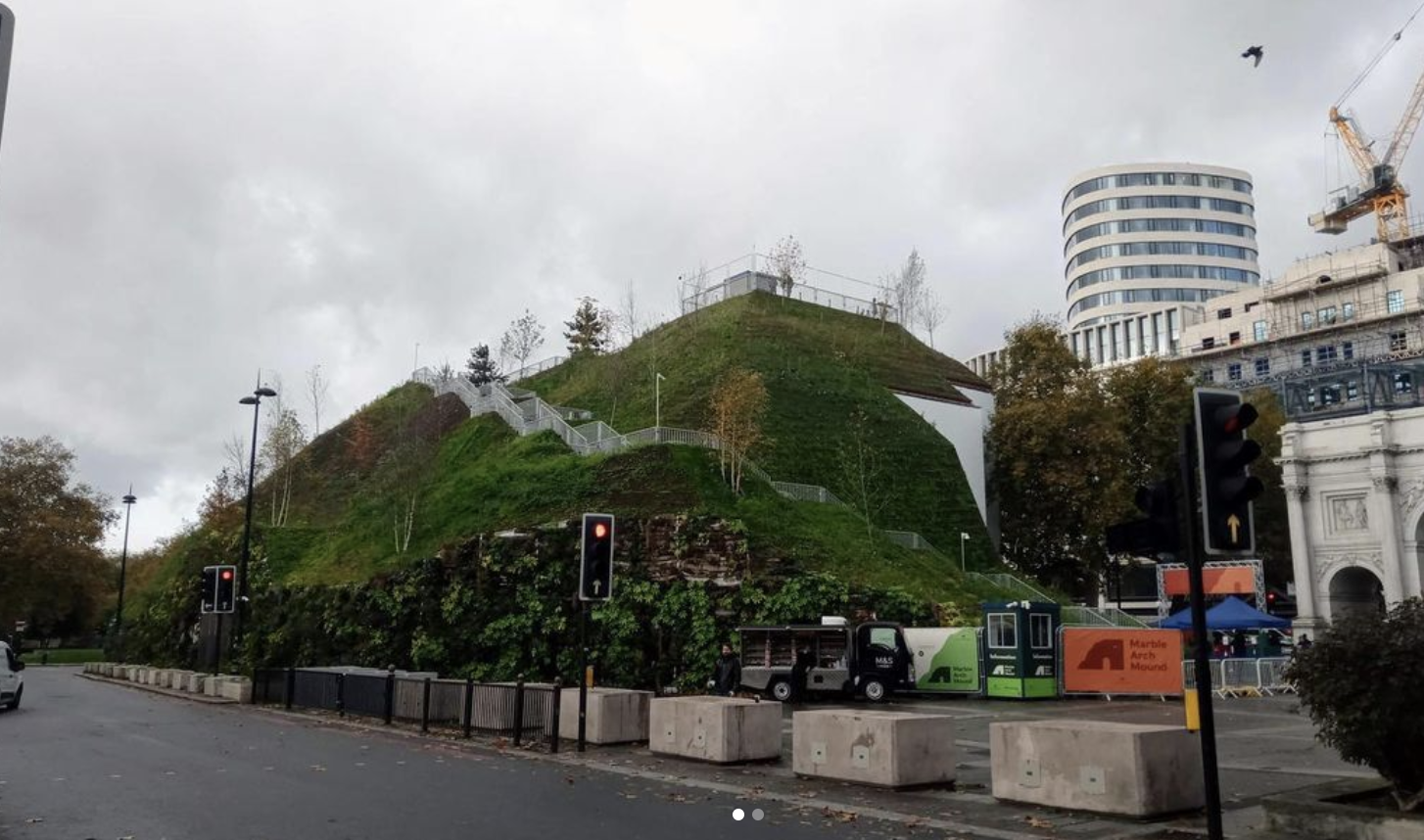Marble Arch Mound: a cautionary tale
London’s bold Marble Arch Mound was constructed amid much fanfare to help lure visitors back to the West End post Covid-19.
The temporary attraction offered those willing to fork out $11.50 the opportunity to climb the 22.5 metre grass and plant covered structure for views “never experienced before” over the Oxford St area.
Unfortunately the experience didn’t come anywhere near expectations, and while there was plenty of media coverage about the attraction, most of it was caustic, ridiculing the “bizarre concept and the eye watering cost” (the budget blew out from nearly $4 million to around $11.5 million). “London’s worst attraction ever”, “Eyesore attraction”, “devastating failure” - the headlines were crucifying.
A subsequent report into the debacle prompted one politician to resign.
Social media users were scathing. This instagram photo by @leanneofbow described it as a “stupid piece of c***”. Other users expressed similar sentiments.
Sitting quietly in the background were Dutch urban design firm MVRDV, the visionaries behind the project. “While the barbers of Fleet Street had their razors out, and until officials completed their investigation, we refrained from responding,” the firm later said in a statement on its website. “We stand by our initial design.”
Renowned internationally for its striking projects, MVRDV was barely mentioned in the Westminster City Council review, which concluded that the fiasco was caused by ‘a (council) failure of project management’ and ‘a lack of effective governance, grip and oversight’ among other things.
What the Marble Arch Mound should have looked like. Render: MVRDV
Nevertheless MVRDV had its reputation to protect, especially when as a practice, it had “rarely seen such a loveless execution” of its designs.
“Anyone who visited the Marble Arch Mound installation in London was no doubt severely underwhelmed,” the firm wrote on its website. “Instead of an inspiring experience offering sweeping views over Hyde Park to provoke contemplation on the value of nature in cities, what visitors actually encountered was disappointing, to say the least.”
MVRDV had a small budget for the design phase: just over $19,000 or .8 percent of the original total budget.
“For us, this implied a significant loss on the project with staff hours alone far exceeding this. As a rule, we don't work under such conditions, but for installations with a social imperative, we sometimes make an exception, especially in the context of the pandemic.” It says it still hasn’t had a satisfactory answer on why the budget blew out so hugely.
And it blames a council decision to reduce the scale of the project and exclude the studio from overseeing construction for its failure. “Through a mixture of budget constraints and a lack of communication, many details concerning the mound’s construction were decided without our involvement.
“A few pictures of the progress of the installation and the claim that everything was going marvellously was all that we had to work with in Rotterdam. Travel was not possible due to Covid measures, so the team could not check progress on site, and frequent communication efforts from our side toward WCC were increasingly ignored.
“As architects, we held our nerve against our better judgment: nature needs time to grow, plants would get healthier with a little rain, the hill, after all, was freely accessible. But when we were finally able to travel and see the project for ourselves, the deception was obvious: there had been virtually no maintenance, making the waste of money complete. What should have been a celebration of London became a loveless installation that, with a few nice green plants here and there, provides a glimpse of what might have been. In our thirty years of practice, MVRDV has never before experienced such nonchalance and laxity with our design work.”
The original design embraced the Marble Arch itself, with a protective, 25-metre-high roofscape and an internal staircase that would allow visitors to see the monument in a way they never could before. Render: MVRDV
The firm goes on to outline in detail other mistakes, but concedes it was “also responsible in this equation” and offers a sincere apology.
“Perhaps we should not have worked for a fee so low that it allowed the client to sidestep the usual procedures. Perhaps when we were pushed out of the construction process we could have stepped out because we couldn't guarantee the project’s quality. This is certainly our greatest sin: we should have ended our participation precisely at that moment. Finally, perhaps when the criticism began to mount, we could have voiced our own concerns, instead of complying with WCC’s clear preference for ambiguity.”


